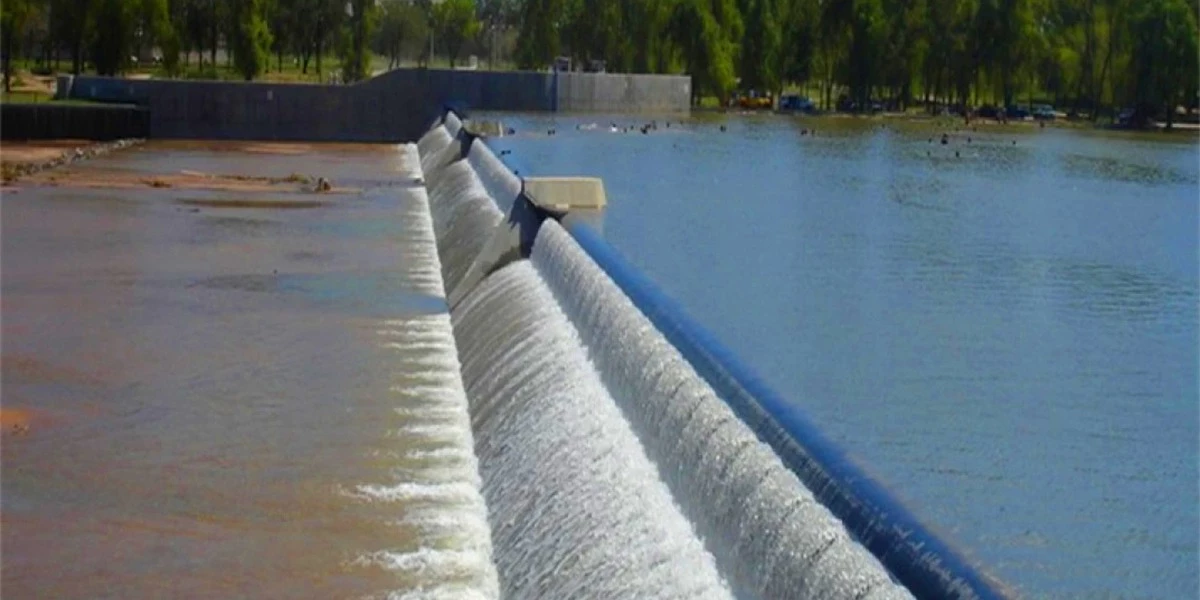

Imagine a future in which flexible rubber dams, as opposed to inflexible concrete ones, completely transform water management. Water levels and flow rates can be easily controlled by these inflatable wonders, which are fixed to riverbeds or canal banks and can change size in response to water or air pressure. By supplying precisely the right amount of water for fields, they provide effective water distribution during irrigation, optimising crop productivity. Inflatable rubber dams provide guardianship during floods, temporarily holding excess water to stop destruction downstream. Because of their versatility, affordability, and low environmental impact, they are ideal instruments for a sustainable future that provides security and control in a dynamic environment.
Inflatable Rubber dams have several benefits over traditional steel or concrete constructions, chief among them being their cost-effectiveness. They are not only less expensive, but they are also easier to install, requiring less work during construction and generating less of a disruption to the surrounding area. Rubber dams are also eco-friendly since they have a lower carbon impact and can be moved and reused in other areas. Even though they are useful, these kinds of rubber dams have limits when it comes to severe weather or large flood flows. Still, efforts are being made to improve their robustness, resistance, and longevity. To improve performance in varied situations, this entails researching novel materials, designs, and technologies.
Rubber dams are often a more affordable and environmentally responsible solution for water management than classical dams. With further development and funding, these inflatable barriers might play a significant role in addressing water-related problems and promoting sustainable development.
Discover the essential aspects to keep in mind while exploring the world of water inflatable dams:
Requires less material for building than conventional dams.
It is simple to inflate and deflate.
Deflation permits unhindered water movement, preventing the accumulation of sediment.
Leaks are avoided by the rubber substance.
EPDM rubber is frequently utilised to withstand these problems.
The length can be changed to suit the amount of water needed.
Minimises disturbance to water flow and lowers dangers like bank erosion.
Replaceable and easily transportable, portable.
Can be applied to a range of water management tasks, including irrigation, flood prevention, and hydropower production.
In comparison to conventional dams, requires less maintenance.
Pressure release valves are one type of safety feature that a water inflatable rubber dam can be fitted with. They are made to resist high water pressure.
The Inflatable rubber dams don’t lessen the natural beauty and the aesthetics of the landscape.
It is not so possible for a normal dam can be built in isolated regions#. Not the same case with inflatable dams, it can be brought there.
In terms of the installation process of these dam spectrums, these are easy to set up and take down. A main prominent reason that allows it to be into action at any time and for whatever period.
Inflatable dams are very useful in terms of the regulation of water flow and averting floods in emergencies.
When heavy rains occur, inflatable dams can be utilised to build makeshift reservoirs for water delivery or storage.
Rubber dams filled with air have revolutionised the building of dams and water management, resulting in notable progress in the area. By applying cutting-edge technology, YOOIL Envirotech has become a dominant force in the reservoir building industry. Companies involved in the construction of dams and water control now place a significant value on sustainability and efficiency. Air-filled rubber dams are an excellent example of these objectives; they offer durable, highly effective, and environmentally friendly solutions. One of the major advantages of air-filled dams is their outstanding efficacy in controlling water; they enable exact control of water flow, flood prevention, and a reduction in water shortages. Customers benefit economically from this, and the environment benefits as well. Apart from understanding the evolving needs of the people it serves, YOOIL Envirotech is committed to providing excellent solutions.
When clients need help in creating selections, their friendly staff is always there to offer assistance. YOOIL Envirotech is a highly reputable and inventive provider of air-filled dam systems. The Chilwa Rubber Dam, a noteworthy project by YOOIL Envirotech, is noteworthy for being India's first air-filled rubber dam. It was finished in a record two years and provides the fertiliser factory of HINDUSTAN URVARAK & RASAYAN LTD. (HURL) with a constant daily water supply of 1400 m3/hr. The dam in the Gorakhpur rubber dam project can be inflated or deflated to control the flow of water. Rubber dams provide several advantages over standard steel gates, including greater lifespan, reduced construction time, fewer running costs, and longer span. Projects & Development India Ltd (Pdil) has awarded YOOIL Envirotech Pvt. Ltd. a certificate of recognition for their outstanding performance on the Chilwa Rubber Dam project.
Contact YOOIL Envirotech today and step up with the great noble cause of water management systems.
